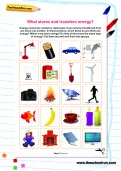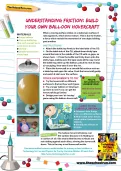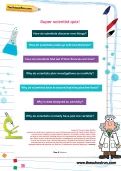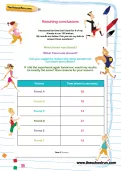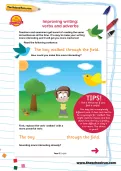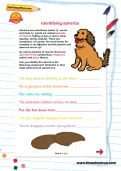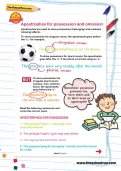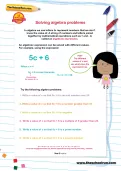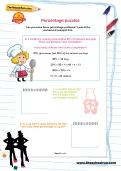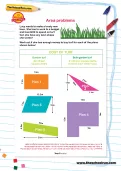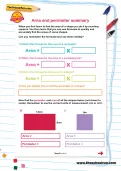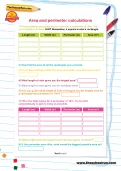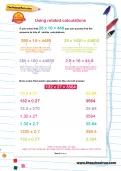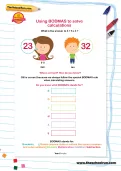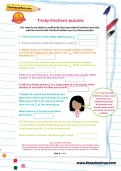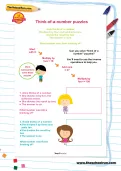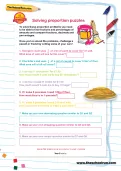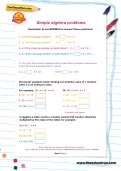Teachers and examiners get bored of reading the same old sentences all the time. It’s easy to make your writing more interesting and it will get you more marks too! Try and make the sentence 'The boy walked through the field' more interesting by using powerful verbs and adverbs.
or
Register to add to your saved resources
Already a subscriber? to view this content.
As well as adverbs of manner there are adverbs of time (yesterday), frequency (often) and place (there). Can you identify the adverb in the following sentences? Underline it, then state which kind of adverb it is.
or
Register to add to your saved resources
Already a subscriber? to view this content.
Etymology is the study of the origin of words and the way in which their meanings have changed throughout history. Complete the worksheet Deduction in reading comprehension, then choose five of the Oliver Twist words you highlighted and fill in this worksheet with the meanings
you guessed.
or
Register to add to your saved resources
Already a subscriber? to view this content.
The following extract is from the second chapter of the novel Oliver Twist by Charles Dickens. Oliver has recently gone to live in a workhouse. Firstly highlight any words you don't understand and see if you can work out what they mean. Then summarise what is happening in each paragraph.
or
Register to add to your saved resources
Already a subscriber? to view this content.
Do you know all the occasions when capital letters should be used? Read the following sentences and circle any letters that should be capitals.
or
Register to add to your saved resources
Already a subscriber? to view this content.
Apostrophes are used to show possession (belonging) and omission (missing letters). To show possession for singular nouns, the apostrophe goes before the ‘s’. To show possession for plural nouns, the apostrophe goes after the ‘s,’ if the plural is formed using an ‘s.’But to show possession for irregular plural nouns (women, men, children, mice), the apostrophe goes before the ‘s’. Read the following sentences and circle the correct word.
or
Register to add to your saved resources
Already a subscriber? to view this content.
The boy walked through the field.... a bit of a boring sentence, yes? Can you make it more interesting by first adding an adjective, then a simile and then a metaphor.
or
Register to add to your saved resources
Already a subscriber? to view this content.
Can you spot the difference between an active and passive verb? Read the following passage and underline all the active verbs, then circle all the passive verbs.
or
Register to add to your saved resources
Already a subscriber? to view this content.
Bar models can help us visualise a problem and work out what operation we need to use to find a missing number. The key to bar models is to label the model with the information you know and the number you are trying to find (which is normally shown with a question mark). Can you use bar models to answer these questions?
or
Register to add to your saved resources
Already a subscriber? to view this content.
In algebra we use letters to represent numbers that we don’t know the value of. A string of numbers and letters joined together by mathematical operations such as + and - is called an algebraic expression. Try the following algebra problems.
or
Register to add to your saved resources
Already a subscriber? to view this content.
Can you solve these tricky percentage problems?
or
Register to add to your saved resources
Already a subscriber? to view this content.
Lucy wants to make a lovely new lawn. She has to work to a budget and has £220 to spend on turf. Can she have any lawn shape she wants? Work out if she has enough money to buy turf for each of the plans shown below!
or
Register to add to your saved resources
Already a subscriber? to view this content.
When you first learn to find the area of a shape you do it by counting squares. You then learn that you can use formulae to quickly and accurately find the areas of some shapes. Can you remember the formulae and use them reliably? Now find the perimeter and area of all the shapes below (not drawn to scale). Remember to use the correct units of measurement (cm or cm2).
or
Register to add to your saved resources
Already a subscriber? to view this content.
How good are you at tricky area and perimeter questions? Have a go at these calculations.
or
Register to add to your saved resources
Already a subscriber? to view this content.
If you know that 28 x 16 = 448 you can quickly find the answers to lots of similar calculations. Draw a line from each calculation to the correct answer.
or
Register to add to your saved resources
Already a subscriber? to view this content.
Do you know what BODMAS stands for? BODMAS tells us the order we need to complete operations in. If there is a bracket work out the result of the operation inside it first then do division then multiplication and finally do any addition and subtraction. Put your knowledge of BODMAS into practice by having a go at these calculations.
or
Register to add to your saved resources
Already a subscriber? to view this content.
You need to be able to confidently find equivalent fractions and add, subtract and divide fractions before you try these puzzles.
or
Register to add to your saved resources
Already a subscriber? to view this content.
Here are some tricky “think of a number” puzzles. Can you solve them?
or
Register to add to your saved resources
Already a subscriber? to view this content.
To solve these proportion problems you need to be able to find fractions and percentages of amounts and compare fractions, decimals and percentages. Once you’ve solved the problems, challenge a parent or friend by writing some of your own!
or
Register to add to your saved resources
Already a subscriber? to view this content.
Find the missing numbers and calculate the value of x in these simple algebra questions. Remember to use BODMAS to answer these KS2 algebra problems!
or
Register to add to your saved resources
